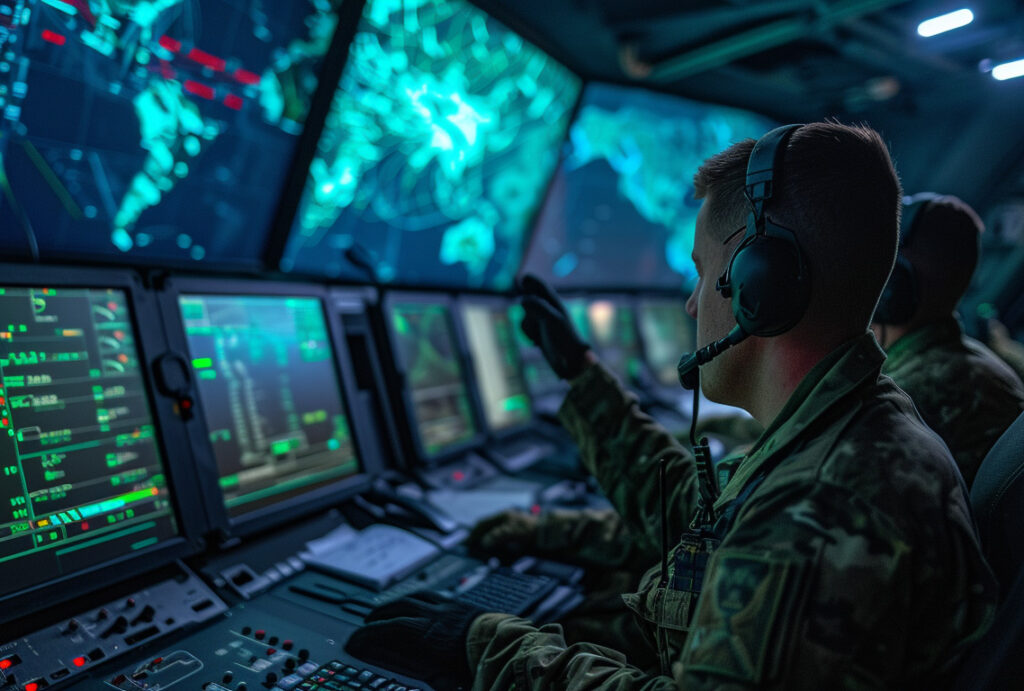
Electronic warfare is disrupting navigation and communication systems in Europe and the Middle East, affecting aircraft, ships and land vehicles.
Electronic warfare (EW) is seriously disrupting satellite navigation systems in Europe and the Middle East, affecting the operations of aircraft, ships and land vehicles. Electronic interference, mainly designed to jam combat drones, creates problems for commercial and military flights. Companies are developing solutions to protect GPS signals against jamming and spoofing, while jamming incidents are a reminder of the historical and current challenges of EW.
Electronic warfare: a scourge for navigation and communication
Disruptions in Europe and the Middle East
Electronic warfare (EW) in Ukraine, the Middle East and north-west Russia has caused significant disruption to satellite navigation systems. These disruptions particularly affect aircraft, ships and land vehicles in roadless areas that rely on these systems to get around. In 2023, commercial aircraft reported thousands of incidents of interference, four times more than in 2022 and twenty times more than in 2018. The majority of these jamming incidents were aimed at disrupting combat drones.
The areas most affected include the Black Sea from Turkey to Azerbaijan, the Mediterranean Sea from Cyprus to Libya, the Baltic Sea near Poland and Latvia, and the Arctic near Finland and Norway. For example, in some cases, pilots received false signals indicating that their aircraft was directly over Tel Aviv airport, when in fact it was still a long way from the airport.
Consequences for flight operations
This interference poses serious problems for flight operations, particularly for commercial flights. Pilots have to be extremely vigilant to detect and correct deviations caused by spoofing, a form of jamming that simulates legitimate navigation signals to throw aircraft off course. This technique makes it difficult to detect interference, as the signals appear to be genuine.
Technological solutions to counter jamming
Faced with these challenges, some companies are developing equipment to protect GPS signals against jamming and spoofing. For example, the Israeli company InfiniDome offers products such as the GPSdome-1 and GPSdome-2, available for around €100, which have been successfully used to protect trucking and drone operations in Israel and elsewhere.
Europe has also introduced the Galileo satellite navigation system, which incorporates an authentication system capable of verifying the origin of signals. The European Commission plans to further strengthen this authentication system, making Galileo the most accurate and secure navigation system available.

History of electronic warfare
Second World War and innovations
Electronic warfare is not a new phenomenon. During the Second World War, the Allies used electronic countermeasures to fool German radars. The “chaff”, or “window”, involved the release of thin strips of foil to create false radar echoes, making it difficult for German operators to track bombers. The Allies also developed radar jamming devices to disrupt German systems and techniques for jamming radio guidance signals.
Recent developments and challenges
Sixty years on, electronic warfare has evolved with the rapid development of electronic jammers to disable wireless detonators in Afghanistan and Iraq. However, these jammers have also caused unintended disruption to friendly electronic devices. For example, Iraqi civilians found that their mobile phone service disappeared when US military convoys approached, due to the Warlock series jammers used by the US military.
These incidents highlighted a recurring problem: the unexpected impact of jamming signals on existing electronic equipment. During the 1990s, this problem was exacerbated by an increase in incidents where military electronics tests disrupted nearby civilian devices.
Strategic consequences of electronic warfare
The disruption caused by electronic warfare has major strategic implications. Not only do they affect the safety of commercial flights and military operations, but they can also have significant economic repercussions. Jamming incidents can lead to delays, diversions and additional costs for airlines and maritime and land transport operators.
In addition, the need to develop countermeasures to protect navigation and communication systems creates a demand for new technologies and innovations. This stimulates growth in the defence and IT industries, but also imposes high costs on research and development.
Future prospects
In the future, it will be crucial to strengthen the resilience of navigation and communication systems in the face of electronic warfare threats. This will require increased international collaboration to share knowledge and technologies, as well as continued investment in research and development of innovative solutions.
Governments and industries will need to work together to develop robust security standards and protocols to minimise the risk of disruption and ensure the safety and reliability of critical systems. Ultimately, electronic warfare will remain a major challenge, requiring constant vigilance and rapid adaptation to new threats and technologies.
Electronic warfare is seriously disrupting navigation and communication systems in Europe and the Middle East, affecting both commercial and military operations. Efforts to develop effective countermeasures and strengthen the resilience of navigation systems are essential to mitigate these impacts and guarantee the safety and reliability of operations.
War Wings Daily is an independant magazine.